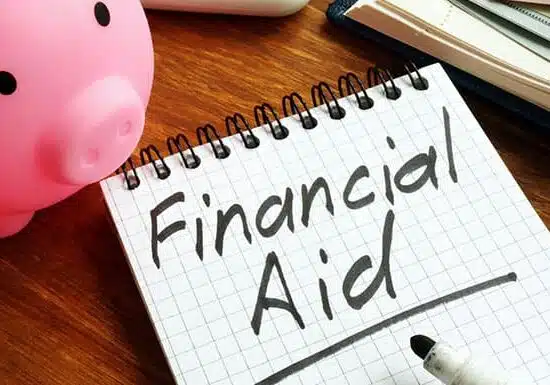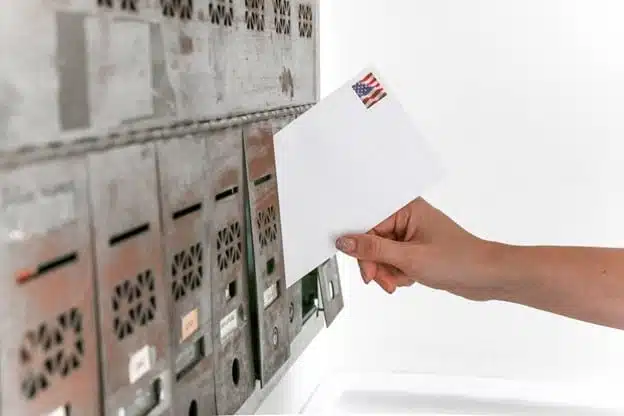How Do I Get My FAFSA Money: A Guide
Updated: July 31, 2025

Navigating the world of financial aid can feel overwhelming, but once you understand the process, it’s much more manageable. If you’ve already submitted your FAFSA, gotten accepted to a school, and are now wondering when (and how) you’ll actually get the money, this guide is for you.
We’ll walk through what happens after you submit the FAFSA, how your financial aid is disbursed, and what to expect with grants, loans, and refunds.
Key Takeaways
- FAFSA funds are sent directly to your school first and used to pay tuition and fees.
- Any remaining money is refunded to you, often via direct deposit, for living costs like rent, meals, or books.
- Each credit hour equals about 1 hour of in-class time and 2 hours of homework weekly.
- Most bachelor’s degrees require 120 semester credits (or 180 quarter credits) to graduate.
- Standard full-time study is about 30 credits per year, with courses ranging from 3 to 5 credits each.
- Disbursement timelines vary by school and academic calendar (semester, quarter, trimester).
- You must reapply for FAFSA each academic year.
What Is FAFSA?
The Free Application for Federal Student Aid (FAFSA) is your gateway to receiving financial help for college. It’s a government form that collects information about your (and your family’s) financial situation to determine what types of aid you qualify for.
Based on your responses, the federal government and your chosen schools use your FAFSA data to offer grants, subsidized or unsubsidized student loans, work-study opportunities, and sometimes even state or institutional aid. Submitting your FAFSA is the essential first step to unlocking financial support for your education.
How Do I Get My FAFSA Money?
Once you’ve submitted your FAFSA and been accepted into a college, the financial aid process really begins. Your school will review your FAFSA results and calculate a financial aid package based on your financial need, enrollment status, and the school’s tuition costs.
You’ll receive a financial aid offer letter, either by mail, email, or through your student portal. This letter outlines the specific types and amounts of aid you’re eligible for, including grants, loans, and work-study. You’ll be able to review and choose which types of aid you want to accept; some students accept only grants, while others also choose federal loans.
Once you’ve accepted your aid, here’s what happens next:
- The aid is sent to your school (not directly to you).
- Your school applies the aid to your tuition, fees, and on-campus housing first.
- If there’s money left over, it will be refunded to you, often by direct deposit, for use on other education-related costs like textbooks, meals, rent, and transportation.
Make sure you’ve set up direct deposit in your student portal to receive refunds quickly. If you don’t, you may receive a paper check, which can take longer to process.
Also remember: FAFSA must be completed every year, and the amount of aid you receive can change depending on your financial situation or enrollment status.

How You’ll Receive Financial Aid

After you have accepted your financial aid award, the amount will first be applied to your student bill to pay tuition, room and board, and other college expenses listed on the bill. When you start college, make sure to set up your direct deposit on your student portal so that if there is any remaining aid to help cover other student expenses, it will be automatically deposited to your bank account each term.
Federal Grants and Loans
Federal loans and grants, as well as state loans and grants, will be applied first to your student bill to cover tuition and other school costs. Then any leftover will be deposited to your bank account.
Work Study
If you qualify for work study, you still need to find, apply, and interview for a job. The money that you earn at your work study job will be given to you as a normal paycheck, and you are free to use that money to support yourself financially as you see fit.
The difference between work study and a typical student job is that on next year’s FAFSA, you do not have to claim any of the money earned as income.
Scholarships
Each scholarship will have their own way of payment or disbursement. Some may be direct deposit, some may be applied directly to your student bill, and some may come in the form of a mailed check. Stay in touch with your scholarship organization so that you know what to expect, and when.
University of the People (UoPeople) offers a number of scholarships to help students cover the cost of exams and other student-related living expenses.
How Long Does it Take for FAFSA to Give You Money?
Financial aid is disbursed at the beginning of each term that you are enrolled. If your school is on a quarter system, that will mean something different than if your school is on a semester system. Financial aid should always be applied to your student bill before tuition is due. Check with your school’s financial aid department or your program advisor to find out when exactly direct deposits are released.
How to Pay for Textbooks Before Financial Aid
Paying for textbooks can be tricky, especially when your financial aid hasn’t arrived yet. This mismatch in timing is something many students face: classes begin, textbook lists are released, and professors expect you to be ready on day one. Meanwhile, your financial aid refund might not be available for a week or more.
Textbooks and course materials are often expensive, sometimes adding up to hundreds or even thousands of dollars per semester. And if you don’t have savings or leftover aid from the previous term, covering these upfront costs can be stressful.
To handle this gap, start by checking if any of last term’s refund can be set aside for book expenses. You can also ask your professors if early materials are really necessary or if digital versions, rentals, or used books are acceptable. Many schools also offer emergency book loans, bookstore vouchers, or library copies to help bridge the gap.
How to Manage Financial Aid Money
Get a bank account if you don’t have one already — this is where your extra aid will go if there is leftover money after tuition and school expenses have been paid to your school. Remember that any money you receive as a loan will have to be paid back eventually.
If you find yourself with more money than you need, you can either request to return it from your financial aid office, make a payment directly to your loan servicer, or put the money aside so you don’t spend it. For the following year, think carefully about how much aid to accept.
Another key tip is to create a student budget. Make a list of necessary expenses you know you will have, and ensure that you keep enough of your aid money to pay for those things. Necessary expenses include textbooks, rent, gas, food, supplies, internet, transportation, etc. Resist the urge to spend the money right when you receive it on things that you may use, but that will leave you unable to pay for the necessities.
What Should You Do If There’s a Financial Aid Delay?
If you log into your student portal’s financial aid section and see that there is a hold on your financial aid, don’t panic!
There are several possible reasons for this, and all of them have solutions.
First, make sure you are taking the correct amount of credits. Federal aid is only eligible for full-time students. If you aren’t taking enough credits, you will either need to forgo aid for the term, or rearrange and add to your schedule.
Another reason there may be a hold is unpaid balance on a previous bill. Go back through your student bills and make sure all balances are paid for you to be able to receive the new aid.
The Bottom Line
Getting your FAFSA money is a multi-step process, but once it’s set up, it runs smoothly each term. After you apply and accept your financial aid package, your school receives the funds directly and applies them to your tuition and fees. Any extra money is refunded to you to help cover costs like rent, meals, books, and transportation.
The key to a stress-free experience is staying organized: know your school’s timeline, review your aid letter carefully, and use your refund responsibly. With the right planning, your financial aid can go a long way in supporting your education and your life outside the classroom.
FAQs
When will my financial aid money be disbursed to my account?
Typically, financial aid is disbursed within the first two weeks of the academic term. Your school will first apply the funds to your tuition and fees. Any remaining balance is then refunded to you, usually by direct deposit.
Does FAFSA money go directly to me or to my school?
FAFSA funds are sent directly to your school first. The school uses them to pay tuition, fees, and any on-campus housing. If there’s leftover money, it’s refunded to you for personal expenses.
How do I receive leftover financial aid after tuition is paid?
Any extra aid is refunded to you after your student bill is paid. You can typically receive it through direct deposit (recommended for faster access) or by check, depending on your school’s policies.
What happens if my financial aid is more than tuition costs?
You’ll receive a refund for the remaining amount, which can be used for living expenses such as textbooks, rent, transportation, or groceries. Keep in mind that loan money still needs to be repaid eventually.
Can I get my FAFSA money before the semester starts?
Usually not. Financial aid is disbursed after classes begin. However, some schools offer bookstore vouchers or emergency advances to help students cover costs in the meantime. Check with your financial aid office.
How long does it take to receive financial aid refunds?
Once tuition is covered, refunds are typically issued within a few days. If you’ve set up direct deposit, you’ll get the money faster. Paper checks may take up to a week or more to arrive.
What payment methods do schools use for financial aid refunds?
Most schools use direct deposit to send refunds. If you haven’t enrolled in direct deposit, your school may send a check by mail. Some schools also offer prepaid cards as an alternative option.
